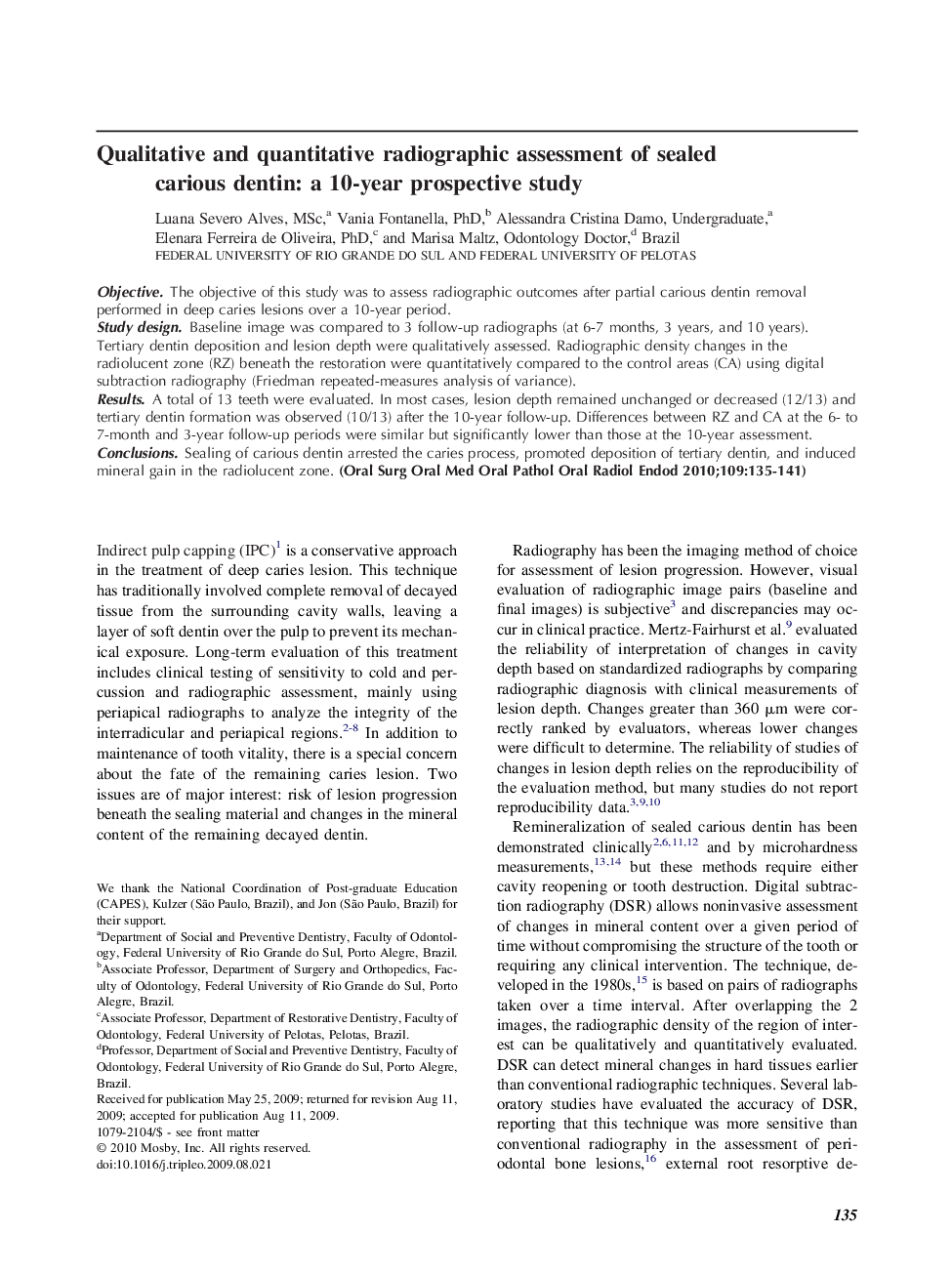| Article ID | Journal | Published Year | Pages | File Type |
|---|---|---|---|---|
| 3167748 | Oral Surgery, Oral Medicine, Oral Pathology, Oral Radiology, and Endodontology | 2010 | 7 Pages |
ObjectiveThe objective of this study was to assess radiographic outcomes after partial carious dentin removal performed in deep caries lesions over a 10-year period.Study designBaseline image was compared to 3 follow-up radiographs (at 6-7 months, 3 years, and 10 years). Tertiary dentin deposition and lesion depth were qualitatively assessed. Radiographic density changes in the radiolucent zone (RZ) beneath the restoration were quantitatively compared to the control areas (CA) using digital subtraction radiography (Friedman repeated-measures analysis of variance).ResultsA total of 13 teeth were evaluated. In most cases, lesion depth remained unchanged or decreased (12/13) and tertiary dentin formation was observed (10/13) after the 10-year follow-up. Differences between RZ and CA at the 6- to 7-month and 3-year follow-up periods were similar but significantly lower than those at the 10-year assessment.ConclusionsSealing of carious dentin arrested the caries process, promoted deposition of tertiary dentin, and induced mineral gain in the radiolucent zone.
